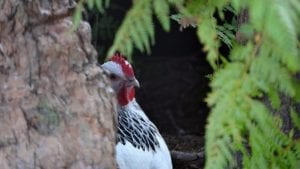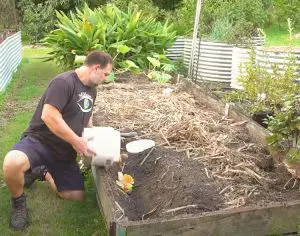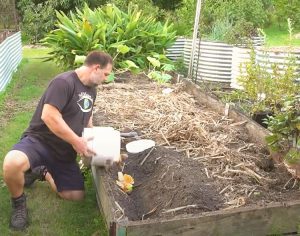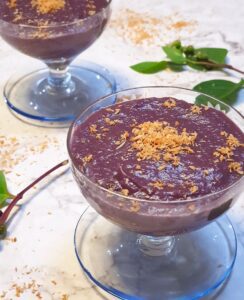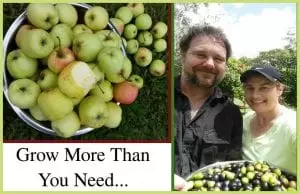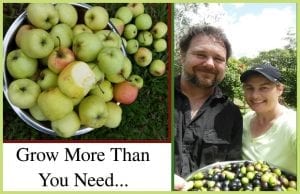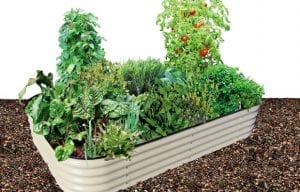I'm always on the lookout for new fruit trees to plant in my garden. Many people don't realise how many thousands of different varieties of fruit there really are in the world besides the standard ones committed to the larger displays in the big supermarkets.
However, if you check the back shelves in the supermarket or better still go to the local farmers markets, you can sometimes find fruits that are less well known, stocked in smaller quantities, but are just as good, tasty, and nutritional as the better known varieties.
The tamarillo is one of those fruits.
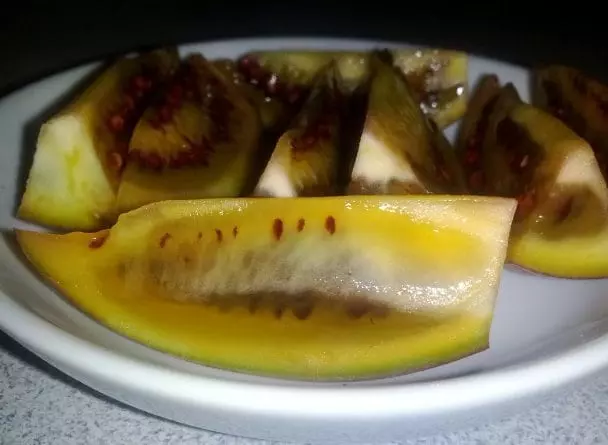
Tamarillo sliced and served "as-is" makes for an interesting party snack
What is a tamarillo and what does it taste like?
Firstly, I must make it clear tamarillos taste nothing like a tomato. In fact, the whole tree tomato “thing” (it's old name) was deliberately changed to stop the two fruits getting confused. However, the tamarillo does come from the same family as the tomato plant, egg plant, capsicum, potato, and even tobacco plants are all related – it's odd, nevertheless, true. 
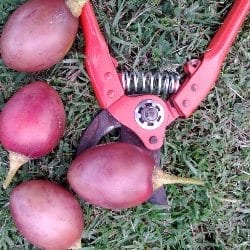
The tree is a fast growing, short-lived (about 3 years – but only in my experience), fragile, woody plant with extra large leaves, which can get to the size of a dinner plate.
Wikipedia states the tamarillo tree can live to 12 years and reaches peak fruit production after 4 years. From what I have experienced, seen, and read, the tree is largly defined as short-lived, but it should be said the growth and fruiting behaviour of the tamarillo tree can differ greatly from region to region. If the tree is showing signs of lethargy after a few years then start some more plants in preparation for replacement (seed propagation is easy).
The fruit is egg sized and shaped, with a leathery skin (similar to a mangoes skin but a little tougher) and is usually either red or orange in colour when ripe. Inside, is a tart tasting orange/reddish flesh with a mass of edible seeds in the centre – the seeds look like tomato seeds but are hard like passion-fruit. The skin isn't eaten, obviously.
There are several varieties although I really reckon two main varieties of tamarillo are noteworthy – the orange and the red (although some call them red, amber and gold). All that is required to know about the varieties (in my humble opinion) is the orange tamarillo is sweeter than the red.
Both of these varieties are worth growing; however, I prefer the red due to its extra tang. I'd like to say the tamarillo tastes like a tamarillo because explanation of the flavour isn't easy and is pretty subjective. I've heard people describe the taste as a pineapple x passion fruit, a kiwi x paw paw, or just look up squinting and say, “I dunno?”

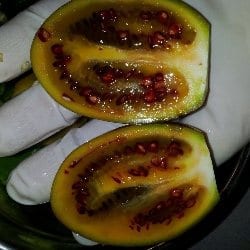
What I can say about the taste is everyone I've seen try the fruit for the first time gives tamarillos the thumbs up.
Why isn't it stocked on the market shelves in larger quantities?
I can only speculate why the fruit isn’t more popular in Australia. Perhaps it's because farming the fruit is not as easy as other fruits like: citrus, mangoes, apples, and stone fruit as the tamarillo tree itself is rather-short lived and not particularly robust especially in high winds. Or, maybe the reason for its obscurity on the market is simply lack of publicity or word getting around.
I know cost can be a factor at my local centre as the tamarillo sells for $1.50 each, which is pretty steep for a fruit the size of an egg!
In New Zealand tamarillos are quite popular and the fruit (although originally from South America) is almost adopted by the Kiwis as their own.
How to grow?
Climate
The tamarillo tree prefers a subtropical climate but will handle colder regions where it may shed leaves and then regrow back in spring. My mother has one of my propagated offspring in Toowoomba, which is a high altitude cold, and windy, place through winter, however, the tamarillo I gave her is growing well albeit a little slower than mine.
Placed against a solid fence or wall in a cool climate for protection is the go.
Soil
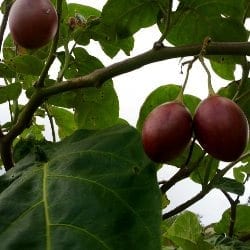
Tamarillos can handle a range of soil types as long as it's not standing waterlogged for long periods. Best results come from free draining, fertile soil with a good helping of compost and manure dug in. Mulching is essential to keep the plants roots cool and protect from becoming too dry.
If the soil is heavy then build up a mound of good soil mix at least a foot high (30 cm) and 3 feet (1 x metre) wide and plant the tamarillo centrally. This method should keep its roots from becoming too wet for prolonged periods.
Additives
I've found the trees benefit from a seaweed application a few times a year, a top dressing of manure or blood and bone once a year, and a few handfuls of lime sprinkled around the base occasionally and at planting time helps keep the plant healthy.
Propagation
Just like tomatoes, the tamarillo grows easily from seed and seem to be true-to-type in my experience but I have read some aren’t. I grew mine by seed from a commercial fruit I purchased and I'm happy with the dozen or so the trees it produced.
Scrape the seed out of the fruit, dry the seed first on kitchen paper towel, and then place in a propagation tray or punnet with a good seed raising mix and you should have seedlings in about a 7 days.
When the seedlings are about three inches high pot-up into larger containers and as it grows continue to pot-up as appropriate.
Cuttings are another easy way to make babies off this plant and it's just a matter of using healthy pruned wood about 12 months old trimming to to about 12 inches, giving it a little hormone powder and nursing it in a pot or the ground as per other cuttings.
Prevent leggy tree
Tamarillos can be prone to leggy growth (plant gets long and spindly with few branches) if this happens fruit production will be reduced and harvesting the fruit will be harder or higher.
Leggy growth in tamarillos can be negated by two simple methods:
-
Pruning – When the plant is growing wait for it to reach about 1 metre high and then chop the top of the plant clean off (knock its head off). This should encourage branching and a tree about head-high.
-
Retarding – Keeping the tamarillo tree in a medium sized pot (8 inch or 20 cm diameter) for about 6 months or more retards the growth and when subsequently planted the tree tends to stay on the small side.

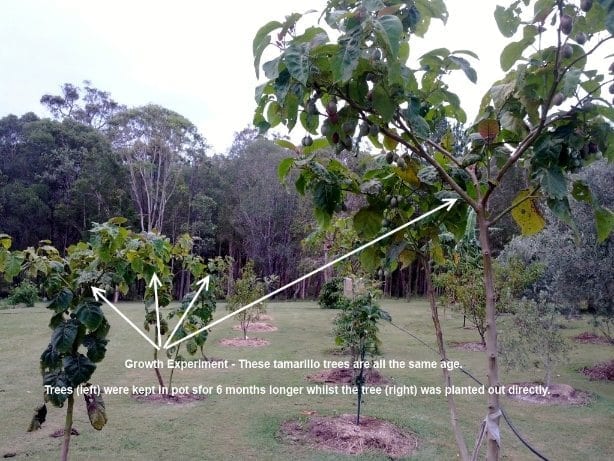
By retarding through pots or truncation, tamarillo trees can be made easier to manage.
The trees in the above picture all fruited well big or small.
Fruiting
Fruiting should happen within 12 months or possibly a tad longer depending on location and first crops are usually abundant. Plants are supposed to fruit around autumn in subtropical climates; however, my plants fruit best in mid-summer so subtle differences in climate, season, micro-climate, for different regions will likely have different flowering results.
From flowering, the fruit develops at a mediocre rate and at about 3 months they are ready for picking when the fruit turns from green to orange or red.

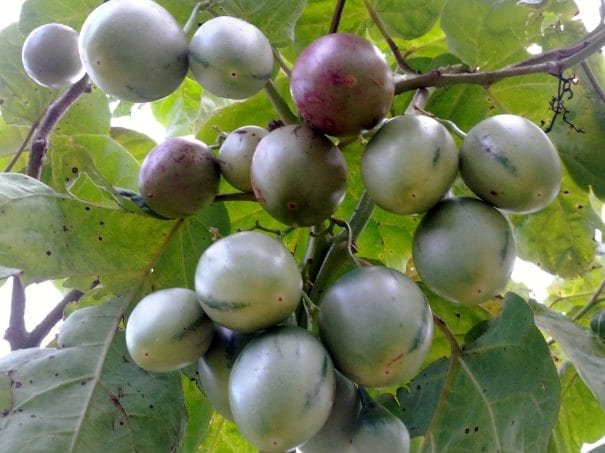
Tamarillo trees can produce an abundance of fruit.
Flavour improves if the fruit is left to ripen on the tree but if animals or insects are a problem then harvesting as the fruit is coloured (but not full colour) to then ripen inside is fine.
Pests and disease
Fairly resistant to both pests and disease my plants don't get much attention in this area and certainly no pesticide is ever used or needed (even though my area is rife with fruit fly).
Powdery mildew can affect the leaves and cause leaf drop or holes but small outbreaks shouldn't be a concern. However, as the tree ages leaf problems do increase.
I've read the tamarillo roots can get attacked by nematodes (which is an enemy of the tomato plant) so perhaps regrowing in a different spot to the last planting can help against this pest and not growing where tomatoes recently grew would be prudent.
As already stated, wet-feet will kill this tree rather quickly so free draing soil is important.
How to eat?
I'm still experimenting with the many various ways the tamarillo fruit can be prepared – it's so fun.
The versatility of this fruit lends itself to either sweetening it down with some icing sugar or savouring it up with balsamic vinegar, as examples. Tamarillos can be stewed, pureed, drank, made into salsas, sauces, chutneys, jams, desserts, or mixed with alcohol (vodka's nice). However, simply cut into little slices and served with an accompanying cheese platter is a pretty people pleaser at functions.

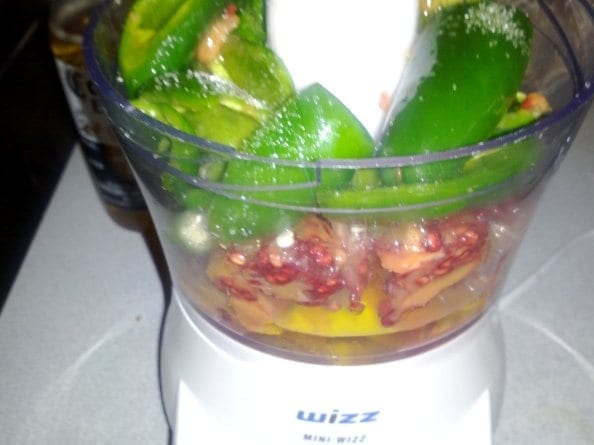
Roughly blended tamarillos in a food processor with some mild jalapenos, olive oil, brown sugar, a squeeze of lemon or lime, pinch of salt, and a dash of red wine vinegar makes a great salsa.
Remove tamarillo skin – "Tip"
A simple trick to remove the skin from the fruit is to place the fruit into a heat proof bowl then boil the kettle and submerge the fruit by pouring the boiling water over the fruit and letting stand for about 4 minutes. Then, cool the fruit by pouring cool water over or by placing the fruit in a tub of cool water. The stem end of the fruit is then removed from about ¼ inch in with a sharp knife and a shallow cut is made around the centre of the fruit, after which, the skin should just slip off.
Dehydrating tamarillos
The only thing that doesn't work well is drying the fruit. Halved Dehydrated tamarillos seem to have an accentuated bitterness when dried and an unpleasant chewiness with hard seeds.
Made into a puree by de-seeding first and adding some banana then dried on a non-stick drying sheet (like paraflexx) would likely make a delicious fruit leather – but I haven't tried this yet… Yes I have now, see my Tamarillo Fruit Leather Recipe
Conclusion
You can't go wrong with trying to grow tamarillos because the cost outlay for seed is potentially as much as bu
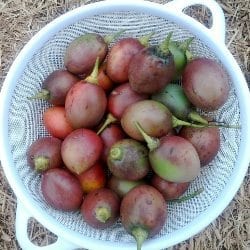
The tree isn't long-lived* and doesn't get imposingly large so even if tamarillos aren’t for you then it's easy to remove the tree and plant something else instead – doubt this'll happen though.
Tamarillos, try one and see for yourself. Remember, it's NOT a tomato…:)
Feel free to use the comment section below and have your say (no email is required).
Look, and see the Earth through her eyes
Mark Valencia – Editor SSM


